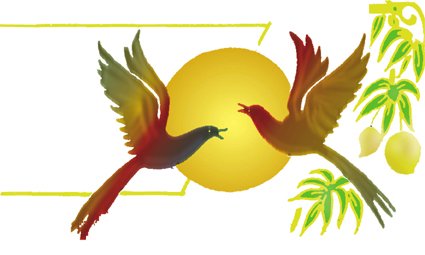Surge 92
THE ENDLESS OBSESSION
Our attachment to the finite seems to have no end. From birth till death, human life revolves around a variety of desires. Toys in childhood, romance in youth, many a possession to seek at different times and some professional goals and so on – are all of limited value, philosophically speaking. Even in the name of spirituality, we remain attached to symbols, words, concepts and so on. We miss out on the infinite truth pointed to by the wise.
Deep in our heart, we actually want the infinite. In fact, any desire is the outcome of a sense of incompleteness within us. No object in this creation, bound by space and time, can take away that incompleteness. The finite cannot lead to the infinite, is a truth to be borne in mind. Adding countless finite objects also does not take us to the infinite. Many of us know this in our heart but go on with our pursuit of desires for we are caught in sheer habit.
The infinite, observes the Mundaka Upanishad, is not (and cannot be) the product of effort1. Effort may be called karma or krita. The infinite is akrita. It is therefore not something to be acquired. We just have to realize it as being already with us. “I will become happy,” is the slogan in the field of the finite. In contrast, “I am happy,” is the intuitive vision in the realm of the infinite. To gain that vision2, says the text, we must approach the wise.
The Chandogya Upanishad teaches us this discrimination, employing the wordsalpa (finite) and bhoomaa (infinite). Though he is a repository of vast knowledge, Saint Narada is unhappy. He goes to Sage Sanat Kumara and the latter does not mince words in pronouncing3, “There is no happiness in the finite.” And again, the infinite (bhoomaa) is not something to be gained through effort (as we know it usually) but we need to inquire, question our ideas of who we are.
To realize what we already have is illustrated in Vedanta through such cases as the necklace on a lady’s neck. She thinks she has misplaced and lost her necklace and is therefore very miserable. After a lot of frantic search, she finally discovers that it is right on her neck. Thus it is a matter of knowing (who we are) and not becoming (somebody).
Since what we need to know is infinite – without name or form – the process of realization is precisely through negation of false concepts, rather than affirming the truth. “Not this, not this,” is therefore the celebrated way4. Interestingly enough, the guidance of seers like Shri Ramana Maharshi goes intensely into ‘identifying a false notion’ and ‘discarding it’ by questioning, “Who am I?” In this sense, self-inquiry is essentially negation of the false. Our mind can hardly engage in visualizing the truth, which the sacred lore describes5 in no uncertain terms as beyond thought and word.
The Buddha therefore remained silent on God or the Absolute Reality. Krishnamurti in the last century expressed much discomfort when anybody referred to the Self (Atman). For him there was only negation of the self (the limited I). The Self (an unlimited I) would be a concept. The Vedanta tradition however employs the idea of the Self but hastens to add it is not within the frame of thought or word. There is never a hint that this Self is personal or private!
I am That6 – is again an utterance that deserves to be discussed. Masters like Shri Nisarga Datta Maharaj, who spoke of abiding by “I am” did not surely mean clinging to any thought. They spoke of a direction. From ideas of “I am this” or “I am that”, we could turn our attention towards the basic sense of “I am” and stay vigilant. A thousand ideas of our limited identity then arise, get exposed and fall away. After peeling the onion all the way, we are left with nothing. Likewise we are left with “no thing” with regard to our true nature. The Upanishads would say this “no thing” is the infinite substrate where we find last peace, which always was.
Swami Chidananda
Varanasi
April 6, 2013
End Notes:
1 naasti akritah kritena – Mu. Up. 1.2.12
2 tad-vijnanaartham – same as above
3 na alpe sukham asti – Cha. Up. 8
4 neti neti – Brihadaranyaka Up
5 mano-vaak-agocharam
6 resembling aham brahma asmi of Br. Up.

